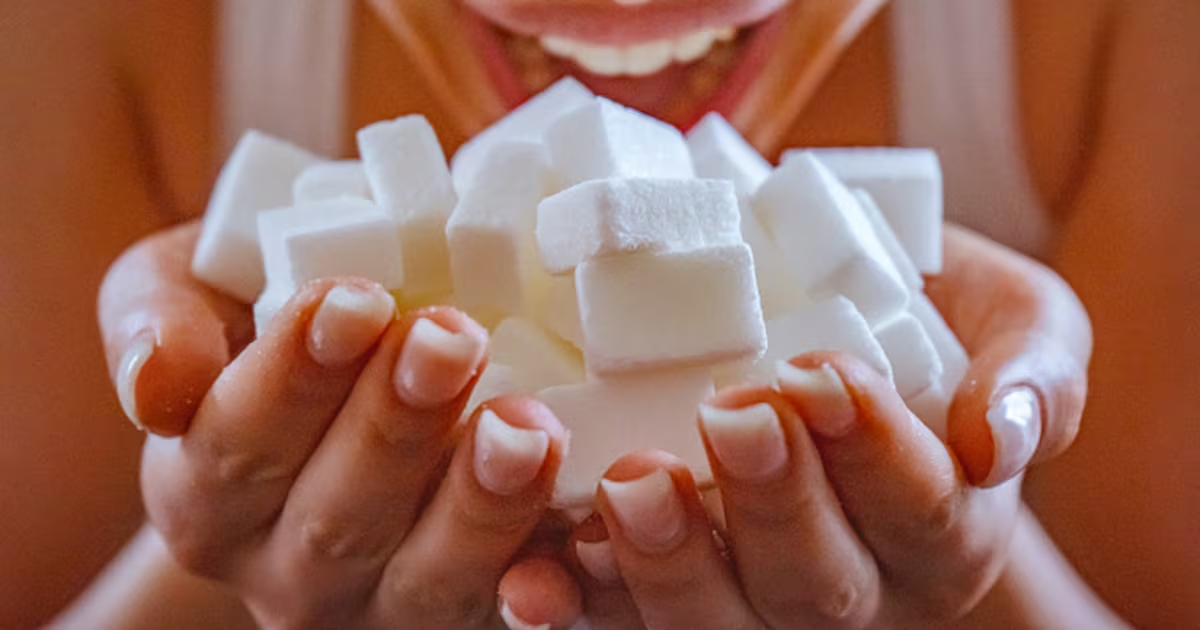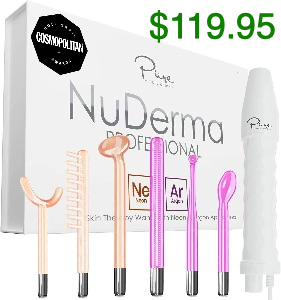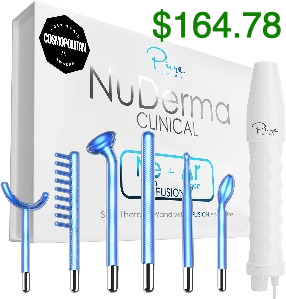How does glycation lead to skin ageing?
Glycation is one of the sneaky but powerful culprits behind skin aging — and it’s often overlooked. Let’s break it down simply and clearly:
What is Glycation?
Glycation is a biological process where excess sugar molecules in your body bind to proteins (like collagen and elastin) without the help of enzymes.
This forms harmful compounds called AGEs — Advanced Glycation End-products.
What Does This Mean for Your Skin?
Collagen and elastin are the two proteins that keep your skin:
- Firm
- Smooth
- Bouncy
But when glycation happens…
Sugar molecules “caramelize” your collagen — literally stiffening and distorting it.
Elastin becomes brittle and less flexible.
Result?
Fine lines
Sagging
Wrinkles
Dullness
Uneven texture
Reduced skin repair over time
What Speeds Up Glycation?
- High-sugar diets (refined carbs, sugary drinks)
- Smoking
- Excess sun exposure (UV + glycation = even worse damage)
- Oxidative stress and chronic inflammation
️ How to Fight Glycation-Induced Skin Aging
1. Reduce sugar intake
- The less excess glucose, the less glycation.
2. Eat antioxidant-rich foods
- Think berries, green tea, turmeric, leafy greens. They fight the oxidative stress that AGEs create.
3. Use anti-glycation skincare
- Ingredients like carnosine, niacinamide, alpha-lipoic acid, and green tea extract can help block or reverse glycation.
4. Protect from UV rays
- Sunlight accelerates glycation damage. Daily broad-spectrum SPF is a must.
5. Healthy lifestyle = healthy collagen
- Hydration, sleep, and reducing inflammation through good habits help maintain strong skin structure.
✨ Bottom Line:
Glycation is like rust on your skin’s support system — silent but damaging.
But with the right diet, skincare, and lifestyle, you can slow it down and preserve your glow.
Can cutting out sugar reverse aging?
Cutting out sugar won’t reverse aging, but it can slow down the visible signs of it and improve your skin’s overall appearance and health over time.
✨ Here’s What Happens When You Cut Out Sugar:
1. Reduces Skin Glycation (Slows Wrinkles)
- Sugar binds to collagen and elastin in your skin through a process called glycation, forming Advanced Glycation End Products (AGEs).
- AGEs stiffen and weaken your skin’s support structure → wrinkles, sagging, dullness.
Less sugar = fewer AGEs = slower skin aging
2. Improves Skin Texture and Hydration
- High sugar levels can cause inflammation and water loss.
- Cutting back can lead to fewer dry patches, better moisture retention, and a smoother texture.
3. Reduces Inflammation & Breakouts
- Sugar spikes insulin, which can lead to hormonal imbalances, increased oil production, and acne.
- Less sugar = clearer, calmer skin.
4. Supports Overall Cellular Health
- Reducing sugar supports better circulation, faster healing, and a more even skin tone.
- You’ll likely see reduced under-eye puffiness and a brighter complexion.
⏳ So, Does It Reverse Aging?
Not exactly. You can’t undo existing wrinkles or sagging without treatments like retinoids, lasers, or microneedling.
But reducing sugar can:
- Prevent premature aging
- Improve skin tone and elasticity
- Enhance long-term skin health
✅ What to Do Instead of Sugar:
- Opt for low-glycemic foods: whole grains, berries, nuts
- Include collagen-boosting nutrients: Vitamin C, zinc, omega-3s
- Drink lots of water and sleep well for natural glow
Bottom Line:
Cutting sugar won’t turn back the clock, but it can pause it from ticking faster. It’s one of the smartest long-term strategies for healthy, glowing, and youthful skin.
Can you reverse glycation in skin?
Cutting out sugar won’t reverse aging, but it can slow down the visible signs of it and improve your skin’s overall appearance and health over time.
✨ Here’s What Happens When You Cut Out Sugar:
1. Reduces Skin Glycation (Slows Wrinkles)
- Sugar binds to collagen and elastin in your skin through a process called glycation, forming Advanced Glycation End Products (AGEs).
- AGEs stiffen and weaken your skin’s support structure → wrinkles, sagging, dullness.
Less sugar = fewer AGEs = slower skin aging
2. Improves Skin Texture and Hydration
- High sugar levels can cause inflammation and water loss.
- Cutting back can lead to fewer dry patches, better moisture retention, and a smoother texture.
3. Reduces Inflammation & Breakouts
- Sugar spikes insulin, which can lead to hormonal imbalances, increased oil production, and acne.
- Less sugar = clearer, calmer skin.
4. Supports Overall Cellular Health
- Reducing sugar supports better circulation, faster healing, and a more even skin tone.
- You’ll likely see reduced under-eye puffiness and a brighter complexion.
⏳ So, Does It Reverse Aging?
Not exactly. You can’t undo existing wrinkles or sagging without treatments like retinoids, lasers, or microneedling.
But reducing sugar can:
- Prevent premature aging
- Improve skin tone and elasticity
- Enhance long-term skin health
✅ What to Do Instead of Sugar:
- Opt for low-glycemic foods: whole grains, berries, nuts
- Include collagen-boosting nutrients: Vitamin C, zinc, omega-3s
- Drink lots of water and sleep well for natural glow
Bottom Line:
Cutting sugar won’t turn back the clock, but it can pause it from ticking faster. It’s one of the smartest long-term strategies for healthy, glowing, and youthful skin.
What does glycated skin look like?
Glycated skin typically looks dull, saggy, and uneven, and it may show early signs of aging, even in younger individuals. This is because glycation damages collagen and elastin—the proteins responsible for your skin’s firmness and glow.
Visible Signs of Glycated Skin:
1. Loss of Firmness & Elasticity
- Skin feels loose or saggy, especially around the jawline, eyes, and cheeks.
- You might notice a “melted” or deflated look over time.
2. Fine Lines & Deep Wrinkles
- Wrinkles may appear earlier or become more pronounced than expected.
- Nasolabial folds and crow’s feet become deeper.
3. ️ Dull, Uneven Skin Tone
- A loss of radiance; skin looks grayish, yellowish, or tired.
- Reduced blood flow and weakened skin structure contribute to lifeless appearance.
4. Stubborn Hyperpigmentation
- Dark spots or uneven patches may persist longer.
- Pigmentation can become deeper and more difficult to treat.
5. Rough Texture or Thinning Skin
- The skin may feel rougher or dry, even with moisturizers.
- Collagen loss leads to thinner, more fragile skin.
Why This Happens:
Glycation causes collagen and elastin to harden, break down, and lose function. Once this structure is damaged, your skin becomes weaker, less elastic, and less capable of self-repair.
✨ Want to Check Your Own Skin?
If you:
- Eat a high-sugar diet or consume refined carbs often
- Have signs of aging that don’t match your age
- Struggle with dullness or loss of bounce
—then glycation might be contributing.
Would you like help creating an anti-glycation skincare or diet plan to restore glow and firmness?
Does vitamin C stop glycation?
Vitamin C doesn’t completely stop glycation, but it significantly helps slow it down and reduce its visible effects on your skin. It’s one of the most effective topical and dietary antioxidants for protecting collagen and maintaining skin’s youthful structure.
How Vitamin C Fights Glycation:
✅ 1. Powerful Antioxidant Action
Glycation produces free radicals that damage collagen and elastin.
Vitamin C:
- Neutralizes free radicals
- Reduces oxidative stress triggered by glycation
- Protects skin from further collagen breakdown
2. Stimulates Collagen Synthesis
Even if some collagen is damaged by glycation, vitamin C:
- Boosts new collagen production
- Helps repair the skin matrix
- Restores firmness and bounce
✨ 3. Improves Skin Tone and Brightness
Glycated skin often looks dull or yellowish.
Vitamin C helps by:
- Inhibiting tyrosinase (enzyme that causes pigmentation)
- Brightening dull and uneven skin
- Improving radiance over time
4. Reduces Inflammation
Glycation promotes chronic low-grade inflammation in the skin.
Vitamin C is anti-inflammatory, so it helps calm:
- Redness
- Irritation
- Pigmentation
Bottom Line:
Vitamin C can’t completely stop glycation, but it:
- Slows its progression
- Boosts collagen repair
- Fights free radicals
- Improves skin tone
Regular use (topical + dietary) is one of the best strategies to protect your skin from premature aging caused by sugar.
Is collagen glycation reversible?
Collagen glycation is not fully reversible, but you can slow its progression, prevent further damage, and improve the appearance of glycated skin through lifestyle changes, targeted skincare, and clinical treatments.
What Is Collagen Glycation?
Glycation occurs when sugar molecules bind to collagen and elastin fibers, forming Advanced Glycation End Products (AGEs).
These AGEs:
- Harden collagen
- Make skin less elastic
- Lead to wrinkles, sagging, and dullness
Once collagen is glycated, it becomes stiff, brittle, and structurally damaged, which the body has limited ability to repair—especially as we age.
Can It Be Reversed?
Not completely. But you can:
✅ 1. Prevent Further Glycation
- Reduce sugar and refined carbs in your diet
- Avoid smoking and excessive alcohol
- Manage chronic stress and inflammation
✅ 2. Stimulate New Collagen Production
You can’t “unglycate” existing collagen, but you can encourage the skin to rebuild healthier collagen:
- Topical retinoids (retinol, tretinoin)
- Vitamin C (boosts collagen synthesis and fights oxidative damage)
- Peptides and growth factors
- Microneedling, lasers, and radiofrequency treatments
✅ 3. Use Anti-Glycation Skincare Ingredients
Some compounds may reduce the formation of AGEs or neutralize their effects:
- Carnosine (a dipeptide that inhibits glycation)
- Niacinamide (barrier repair + anti-inflammatory)
- Green tea extract / EGCG (antioxidant)
- Alpha-lipoic acid
✅ 4. Support Skin from Within
Eat foods rich in:
- Vitamin C, E, and zinc
- Omega-3 fatty acids
- Polyphenols (berries, green tea, turmeric)
Summary:
Collagen glycation is permanent at the molecular level, but its visible effects (sagging, dullness, wrinkles) can be reduced and prevented with:
- Low-sugar lifestyle
- Antioxidant-rich skincare
- Collagen-boosting treatments
What foods reverse glycation?
While no food can fully reverse glycation, certain foods can help prevent further glycation, neutralize AGEs, and support collagen repair—which can significantly improve the appearance of your skin and slow premature aging.
✨ Top Foods That Fight Glycation (Anti-AGE Foods)
1. Berries (Blueberries, Strawberries, Raspberries)
- High in polyphenols and vitamin C
- Protect collagen and reduce oxidative stress
✅ Eat: 1 handful/day, fresh or frozen
2. Olive Oil
- Rich in healthy fats and polyphenols
- Reduces inflammation and protects skin cells
✅ Use as: Dressing or cooking oil
3. Leafy Greens (Spinach, Kale, Moringa)
- Packed with magnesium, chlorophyll, and antioxidants
- Help detoxify and reduce inflammation
✅ Add to: Smoothies, salads, or sautéed dishes
4. Garlic and Onions
- Contain sulfur compounds that support glutathione, your body’s master antioxidant
- May inhibit AGE formation
✅ Use fresh in cooking
5. Nuts & Seeds (Almonds, Chia, Flax)
- Rich in vitamin E and omega-3s
- Help maintain skin elasticity and reduce inflammation
✅ Eat: 1 small handful daily
6. Sweet Potatoes & Carrots
- Low glycemic and rich in beta-carotene, which protects collagen from damage
✅ Use as: Roasted side dish or in soups
☕ 7. Green Tea / Matcha
- Contains EGCG, a potent anti-glycation antioxidant
- Helps protect collagen and reduce inflammation
✅ Drink: 1–2 cups/day
8. Turmeric
- Contains curcumin, which helps inhibit AGE formation and supports detoxification
✅ Use in: Golden milk, curries, or supplements
9. Citrus Fruits (Lemons, Oranges, Amla)
- High in vitamin C, crucial for collagen synthesis and preventing glycation damage
✅ Add fresh juice or slices to water or meals
10. Legumes (Lentils, Chickpeas, Beans)
- Rich in fiber and plant protein
- Help balance blood sugar and reduce AGE accumulation
✅ Use in salads, soups, or curries
❌ Also Important: Avoid High-AGE Foods
To really see results, cut down or avoid:
- Fried foods
- Grilled or charred meats
- White bread, pastries, and sugary snacks
- Processed and packaged junk foods
These contain or promote the formation of dietary AGEs, which speed up aging internally and externally.
✅ Summary:
You can’t undo glycation, but a diet rich in antioxidants, fiber, healthy fats, and low-glycemic foods can dramatically reduce its effects and help your skin look firmer, brighter, and younger.
Does exercise stop glycation?
Exercise doesn’t stop glycation entirely, but it significantly reduces its impact, especially when done regularly. It’s one of the most effective natural strategies to lower AGE (Advanced Glycation End Product) accumulation and protect your skin and organs from aging prematurely.
♀️ How Exercise Helps Reduce Glycation:
✅ 1. Improves Blood Sugar Control
- Glycation is fueled by high blood sugar.
- Regular exercise improves insulin sensitivity, helping your body use glucose efficiently instead of letting it linger and bind to collagen.
Better blood sugar = fewer AGEs = slower aging
2. Increases Antioxidant Activity
- Physical activity stimulates your body’s own antioxidant defenses (like glutathione and superoxide dismutase).
- These antioxidants help neutralize free radicals formed during glycation.
♻️ 3. Promotes Cellular Repair & Detox
- Exercise enhances autophagy—your body’s way of cleaning out damaged cells, including those affected by glycation.
- It also boosts circulation, helping skin regenerate faster.
4. Protects Collagen and Elastin
- By keeping inflammation and oxidative stress under control, exercise helps preserve collagen and prevents the stiffness and breakdown linked to AGEs.
♀️ Best Types of Exercise for Glycation Prevention:
| Type | Benefit |
|---|---|
| ♂️ Cardio (walking, running, cycling) | Improves glucose metabolism |
| Yoga & Pilates | Reduces cortisol (stress hormone that fuels glycation) |
| ️ Strength Training | Boosts insulin sensitivity & collagen repair |
| ♀️ Light movement post-meal | Lowers post-meal blood sugar spikes |
⚠️ A Word of Caution:
Too much intense exercise without rest can increase oxidative stress, which may indirectly worsen glycation. Balance is key:
- Mix aerobic, strength, and flexibility work
- Get enough sleep and stay hydrated
✅ Summary:
No, exercise doesn’t eliminate glycation, but it’s one of the most effective ways to reduce its formation, slow its effects, and keep your skin and body youthful.
What is the best skin treatment for glycation?
The best skin treatments for glycation aim to reduce the visible effects of collagen damage, boost skin regeneration, and prevent further AGE (Advanced Glycation End Product) formation.
While glycation can’t be reversed, you can visibly improve sagging, dullness, and wrinkles caused by it with the right combination of professional treatments, targeted skincare, and lifestyle habits.
✨ Top Skin Treatments for Glycation Damage
1. Microneedling with PRP or RF
- Stimulates collagen and elastin regeneration
- Helps improve firmness, texture, and fine lines
- PRP (Platelet-Rich Plasma) boosts healing
- RF (Radiofrequency) adds skin-tightening benefit
Ideal for: Early to moderate signs of glycation
2. Laser Resurfacing (Fraxel, CO₂)
- Removes damaged skin layers
- Stimulates new collagen production
- Reduces dullness, wrinkles, and hyperpigmentation
Best for: Advanced signs of aging or uneven tone
3. Radiofrequency Skin Tightening
- Uses controlled heat to stimulate collagen fibers
- Improves skin elasticity and lifts sagging areas
Non-invasive and requires no downtime
4. Chemical Peels (TCA, Glycolic, Mandelic Acid)
- Gently exfoliate the top layers of skin
- Reveal brighter, smoother skin underneath
- Help fade dullness caused by glycation
Combine with antioxidant-rich skincare for best results
5. LED Light Therapy (Red/Infrared Light)
- Boosts cellular repair and collagen activity
- Reduces inflammation and oxidative stress
Gentle option for regular skin maintenance
Skincare Ingredients That Fight Glycation
To support these treatments and prevent further damage, use:
| Ingredient | Benefits |
|---|---|
| Vitamin C | Stimulates collagen & reduces dullness |
| Niacinamide | Anti-inflammatory & improves elasticity |
| Retinoids | Collagen-boosting & skin-renewing |
| Carnosine | Inhibits formation of AGEs |
| Green tea (EGCG) | Antioxidant and anti-glycation |
| Peptides | Signal skin to rebuild collagen |
Bonus: Internal Support Is Key
Even the best skin treatments won’t help if you don’t:
- Reduce sugar & processed carbs
- Eat antioxidant-rich foods
- Stay hydrated
- Get 7–8 hours of sleep
Summary:
The best skin treatments for glycation are those that stimulate collagen, boost skin renewal, and protect from further damage.
A combination of microneedling, laser treatments, and antioxidant-rich skincare yields the best results.

 Pure Daily Care NuDerma Handheld Skin Therapy Wand Machine w/Neon – Anti-Aging - Skin Tightening - Wrinkle Reducing - Dark Circles – Clarifying - Hair & Scalp Stimulator
Pure Daily Care NuDerma Handheld Skin Therapy Wand Machine w/Neon – Anti-Aging - Skin Tightening - Wrinkle Reducing - Dark Circles – Clarifying - Hair & Scalp Stimulator NuDerma Professional Skin Therapy Wand - Portable Skin Therapy Machine with 6 Neon & Argon Wands – Boost Your Skin – Clear Firm & Tighten
NuDerma Professional Skin Therapy Wand - Portable Skin Therapy Machine with 6 Neon & Argon Wands – Boost Your Skin – Clear Firm & Tighten NuDerma Clinical Skin Therapy Wand - Portable Skin Therapy Machine w 6 Fusion Neon + Argon Wands – Anti Aging - Clarifying - Skin Tightening & Radiance - Wrinkle Reducing
NuDerma Clinical Skin Therapy Wand - Portable Skin Therapy Machine w 6 Fusion Neon + Argon Wands – Anti Aging - Clarifying - Skin Tightening & Radiance - Wrinkle Reducing